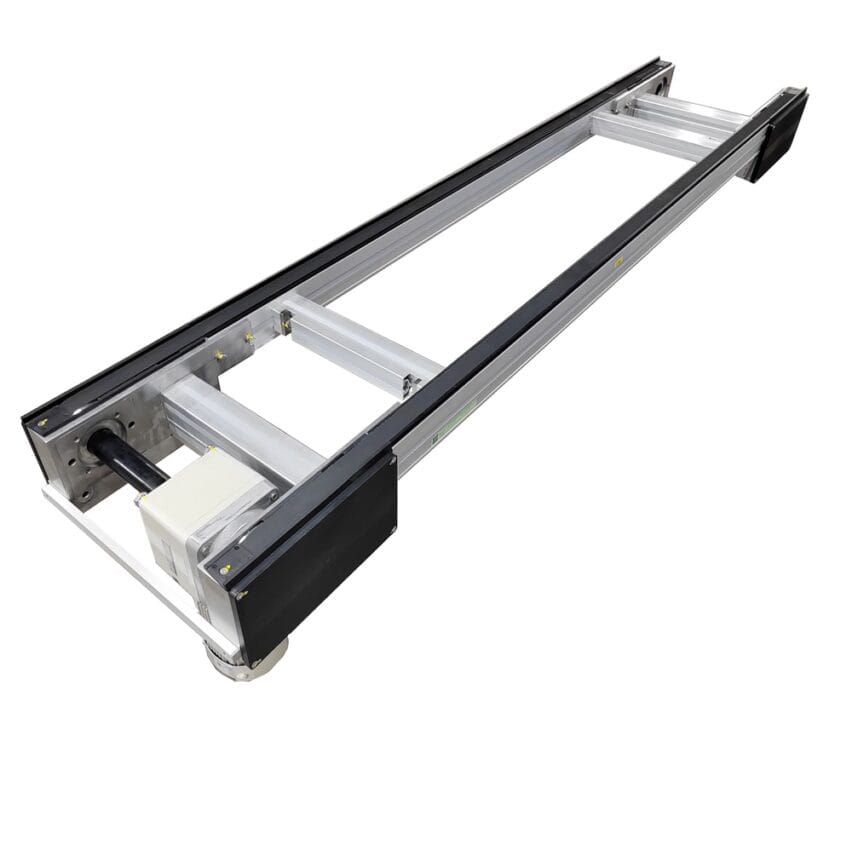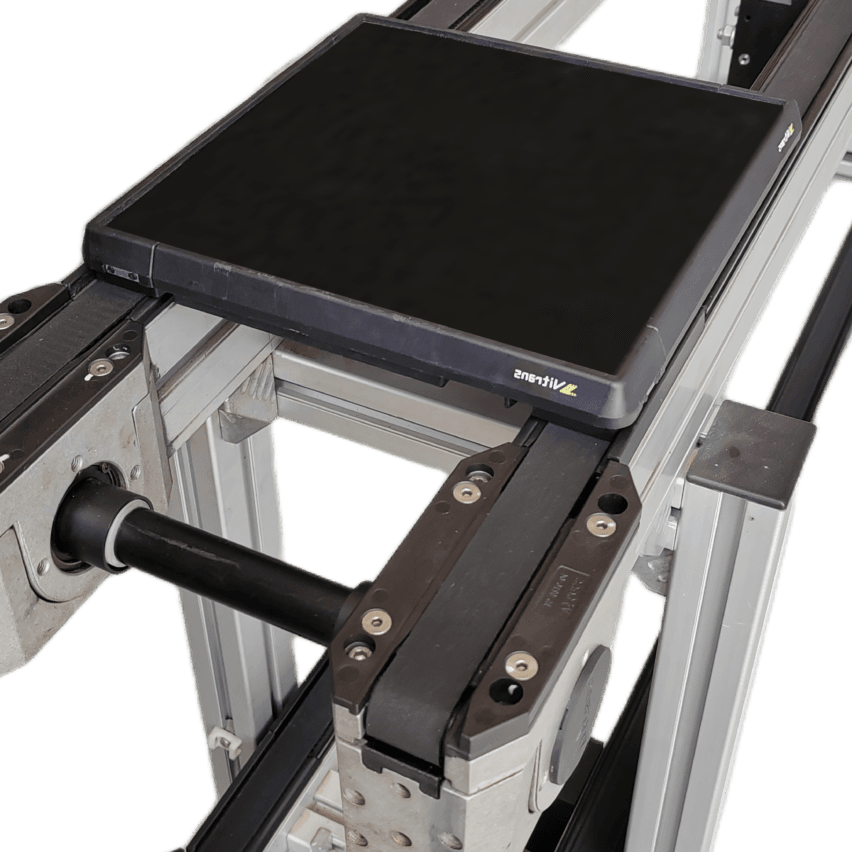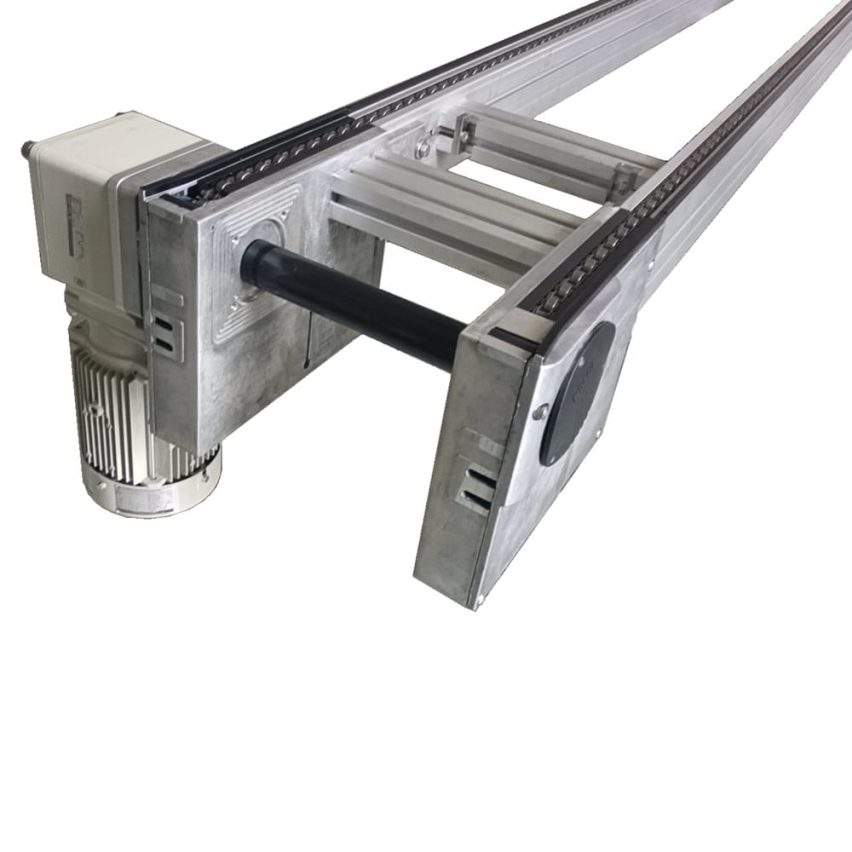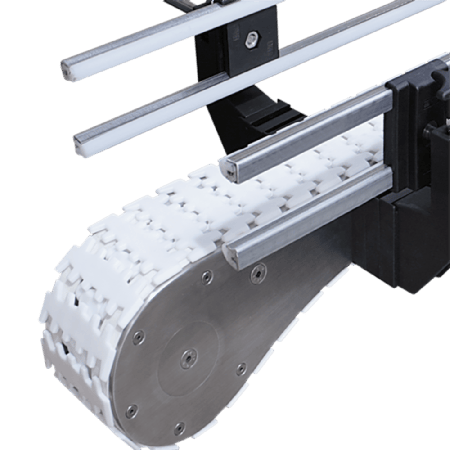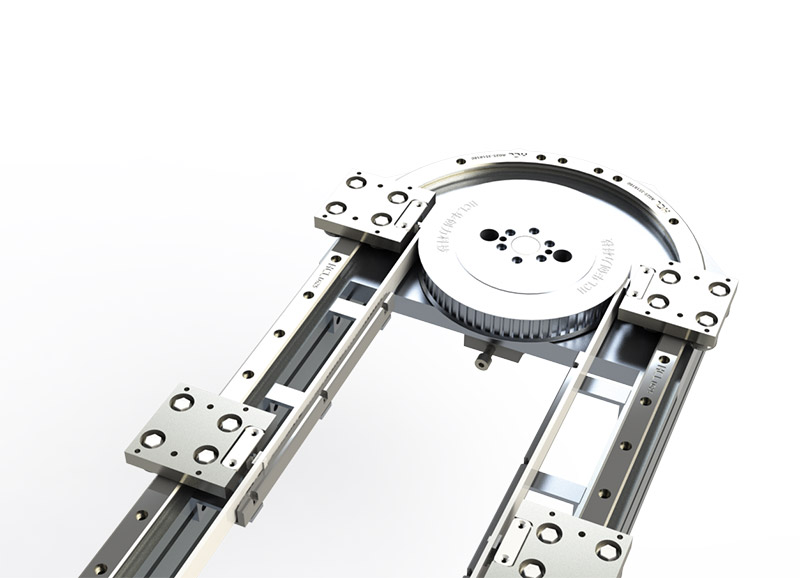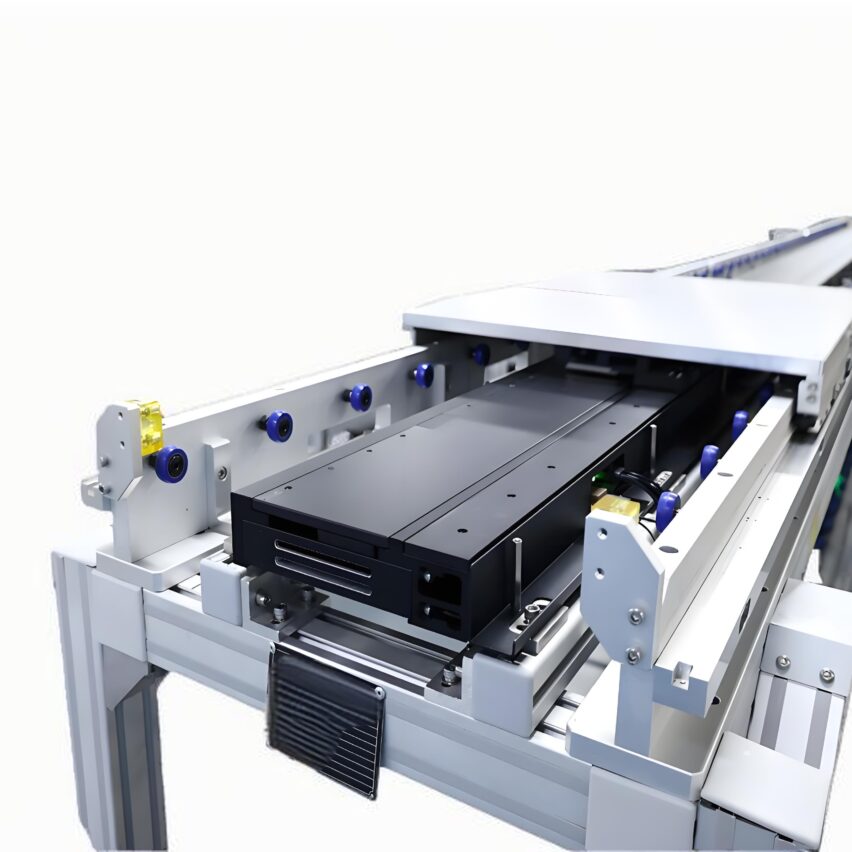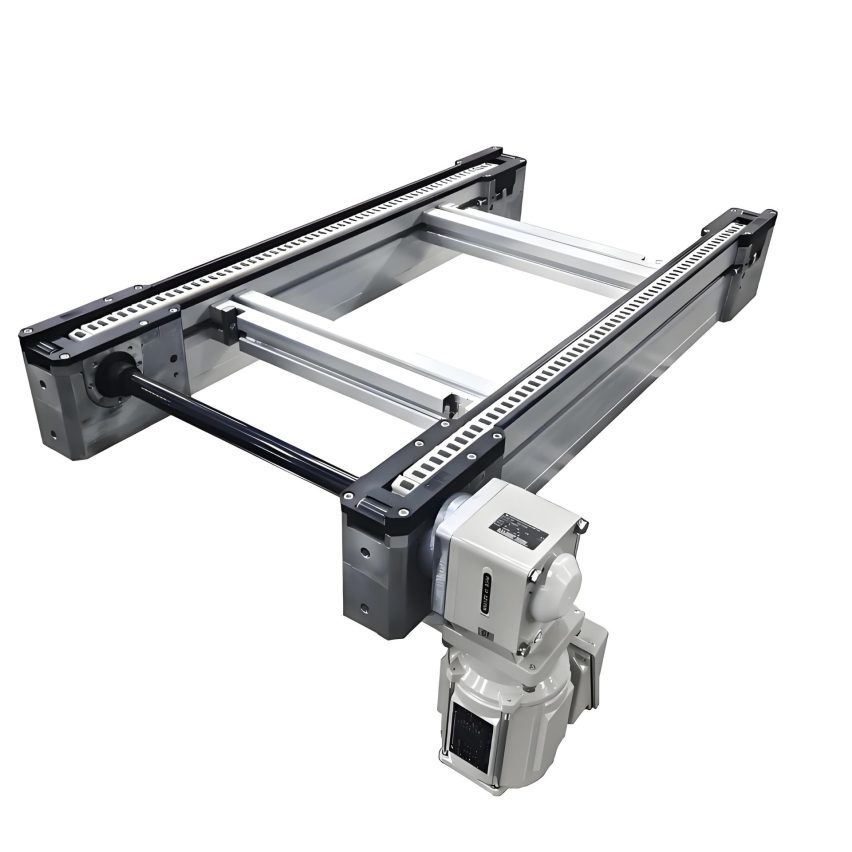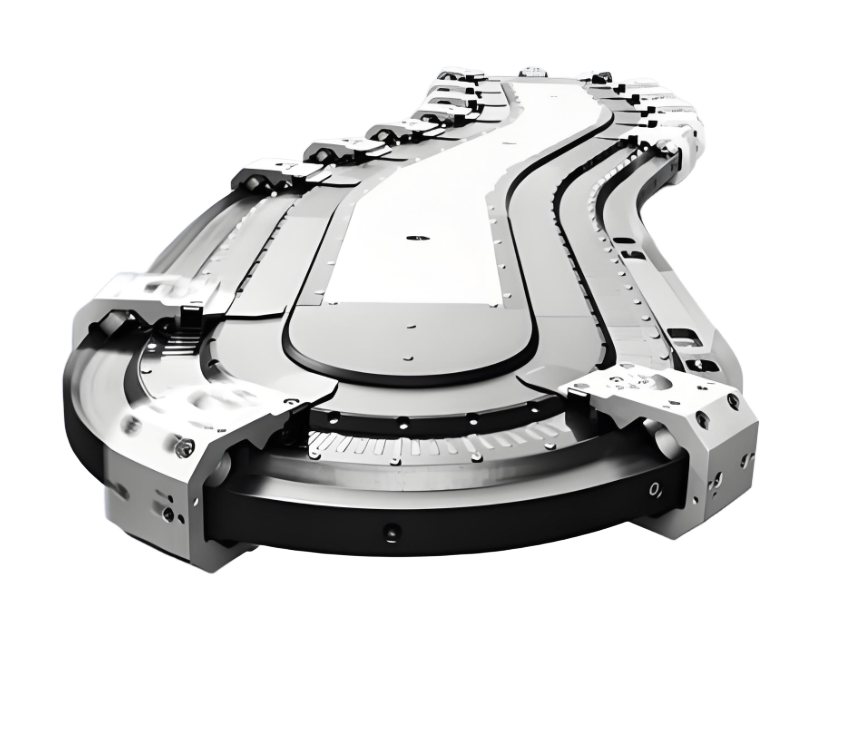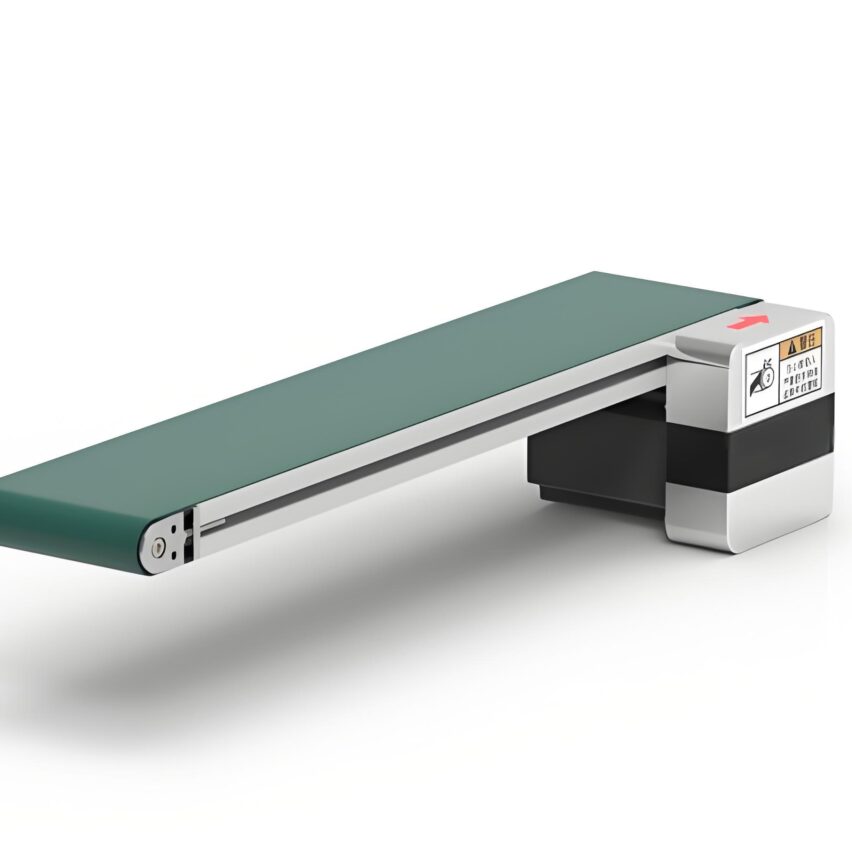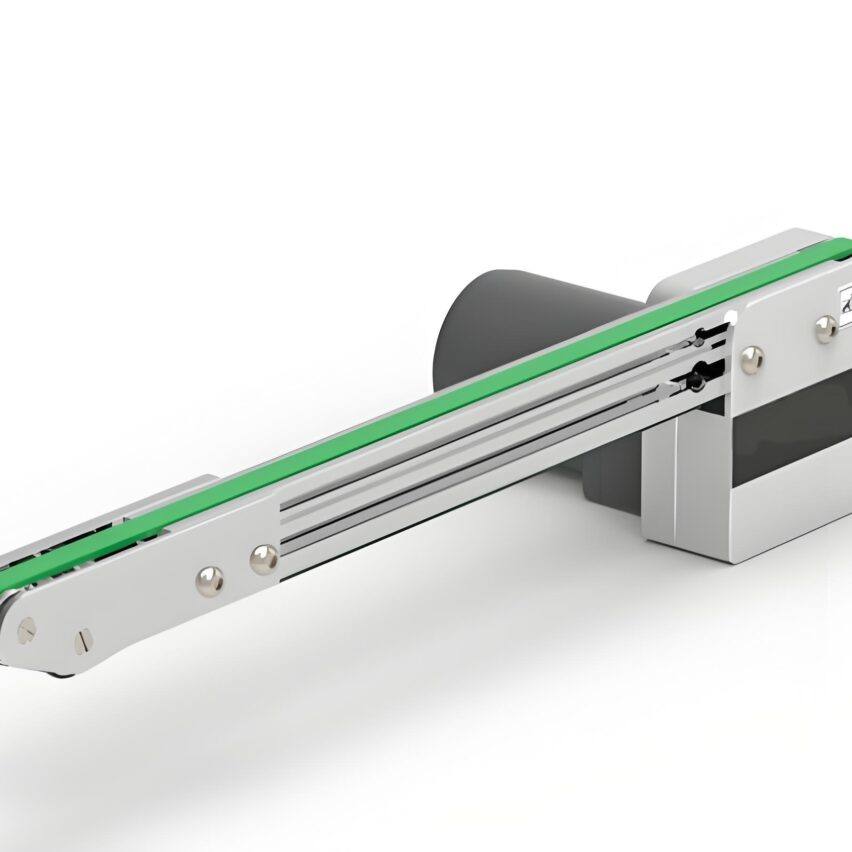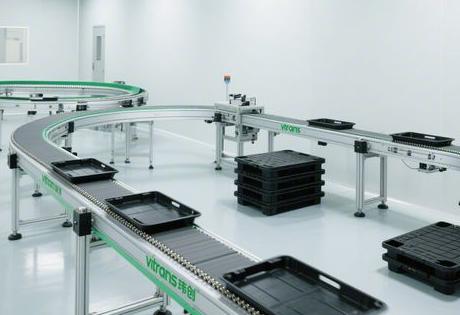
I. Core challenges and breakthroughs in clean technology
The central paradox of the clean room multiplier chain is that theDynamic balance between transfer efficiency and cleanliness level. Conventional multiplier chain generates dust up to 120mg/m³ in general industrial environment, while ISO 14644-1 Class 7 clean room requires 0.5μm particle concentration ≤ 352,000 particles/m³. The new generation of specialised multiplier chains breaks the mould through triple technology:
- Fully sealed chain compartment: Stainless steel shell integrated negative pressure dust removal system, internal dust leakage rate reduced by 98.7%
- Dry Lubrication SystemFood-grade graphene grease replaces mineral oil, completely eliminating oil mist volatilisation (measured volatilisation <0.01ppm).
- Static elimination mechanism: Built-in ionic wind bar + conductive roller (surface resistance 10⁶-10⁹Ω), ESD risk down 90%
personal viewpointThe nature of the multiplier chain in a clean environment is a "precision container that quantifies contamination". Measurement data from a chip factory shows that after adopting the specialised speed chainCleanroom O&M Cost Reduction 40%--The value lies not only in the transmission function, but also in the transformation of the device itself into a "pollution control node".
II. Disruptive innovations in materials and structures
1. Cleaner-grade material systems
- Stainless steel bodySUS304L material instead of carbon steel, corrosion resistance increased by 5 times, ion precipitation ≤ 0.1μg/cm².
- Composite roller design::
- Inner: chrome-molybdenum alloy steel load-bearing (200kg per single point)
- Outer: anti-static polyurethane coating (90 Shore A hardness), 85% reduction in abrasion dust
- Nano Antibacterial Guide: Anodised aluminium substrate + Ag ion coating, bacterial inhibition rate 99.2%
2. Dust-free structural design
- Zero clearance sealsLabyrinth sealing strip with air curtain isolation to isolate external particles (isolation efficiency 99.99%)
- Self-cleaning trackV-groove structure with compressed air nozzles automatically removes residual particles every 100 metres.
- Modular quick release: Tool-less disassembly design, replacement of key components of the cleanroom exposure time <15 minutes
III. Clean optimisation of control systems and powertrains
1. Intelligent clean management
- Real-time particle monitoring: Laser particle counters every 3 metres, automatically triggering decontamination mode when the limit is exceeded.
- Precise humidity controlDew point sensor linked humidification system, humidity fluctuation ≤ ± 3% (maintain the ideal range of 30%-60%)
- Dynamic optimisation of energy consumptionStandby power consumption <0.2kW, energy saving 52% than traditional equipment
2. Silent Power Technology
plaintextmake a copy of| Components | Conventional Solutions | Clean Room Solutions | Improved Results |---------------|---------------|----------------|----------------- | Drive motors | Asynchronous motors | Permanent magnet synchronous motors | Noise reduced to 58dB(A) | Reduction Mechanism | Gear Reduction | Magnetic Levitation Transmission | Vibration Amplitude ↓70% | Chain Tension | Mechanical Spring | Pneumatic Servo Control | Tension Fluctuation ≤±0.5NAfter the application of a biopharmaceutical factory, the background noise of the clean room was reduced from 65dB to 52dB.
IV. Customised solutions for industry application scenarios
Semiconductor manufacturing: nanoscale cleanliness
- Microvibration Control: Air spring vibration isolation system, amplitude ≤±0.3μm
- Wafer Anti-Contamination: Localised class 100 clean hood (0.1μm particles ≤ 100/m³)
- Data traceability: RFID tags on each wafer, <10 seconds response time for traceability of contamination events
Medical consumables production: sterility assurance
- Autoclave compatible: 150°C dry heat sterilisation resistance, spore killing rate >99.99%
- No dead space design: Curved corners with a radius of >20mm, eliminating particle build-up.
- Material Compatibility: USP Class VI certified medical material
V. Future trends: integration of smart self-purification and digital twins
I think the next generation of cleanroom multiplier chains will move to theAutonomous "Sense-Decide-Purify" systemEvolution:
- Self-diagnostic purification module: Analyses wear dust composition via AI and automatically matches cleaning strategies (e.g. plasma cleaning cycle shortened by 30%)
- digital twin preview: Virtual model predicts equipment contamination hotspots and optimises sealing structure design
- Carbon Footprint Visualisation: Real-time display of energy consumption and carbon emissions per metre of conveyor chain to promote green factory certification
- Cross-Protocol IntegrationSupports semiconductor communication protocols such as SEMI E54, SECS/GEM, etc., directly interfacing with the factory service system.
Exclusive data: Semiconductor Fabs with Intelligent Self-Cleaning Multiplier Chains, 2026 Industry White Paper RevealsWafer contamination rate reduced to 0.003 wafers per 10,000 wafers--The breakthrough is not a mere speed increase, but a reconfiguration of the cleanroom material flow logic by "zeroing out the contamination equivalent of the transport process".
Self-questioning on core issues
Q1: How to solve the fundamental conflict between lubricants and clean rooms?
Molecular level bonding technology is the key::
- Solid state lubrication layer: Molybdenum disulphide nanoparticles embedded in the surface of the rollers, reducing the coefficient of friction to 0.02
- Self-repairing coatings: Microdamage release repair microcapsules for extended life up to 50,000 hours
- real time data: Volatility of lubricant after 6 months of continuous operation is only 0.21 TP3T of the conventional solution.
Q2: Does the modular quick release affect the rigidity of the device?
Dual safeguard mechanism::
- Prestressing locating pinsAircraft-grade titanium alloy pins with 0.1μm grade locating holes for an overall connection strength of 95%.
- Dynamic Compensation AlgorithmStrain sensors monitor deformation in real time and automatically adjust support cylinder pressure.
- A panel factory measured splicing error <3μm/10m, better than the welded structure
Q3: Is it compatible with existing cleanrooms for retrofitting?
Third-order adaptation strategy::
- spatial adaptationCompact drive unit (thickness ≤150mm) for old buildings with a floor height of 2.8m.
- Open interfacesEtherCAT/PROFINET bus interface, compatible with the existing 90% control system.
- phased escalation: Support for single-segment modification (minimum unit 3 metres), downtime <4 hours/segment
Industry Insights: The ultimate mission of the Clean Room Speed Chain is not "zero contamination", but rather the creation of a clean room byExponential reduction in pollution control costs--When the operation and maintenance cost of clean equipment is lower than 15% of the total input of the production line, high-end manufacturing will usher in the era of precision manufacturing civilian.


